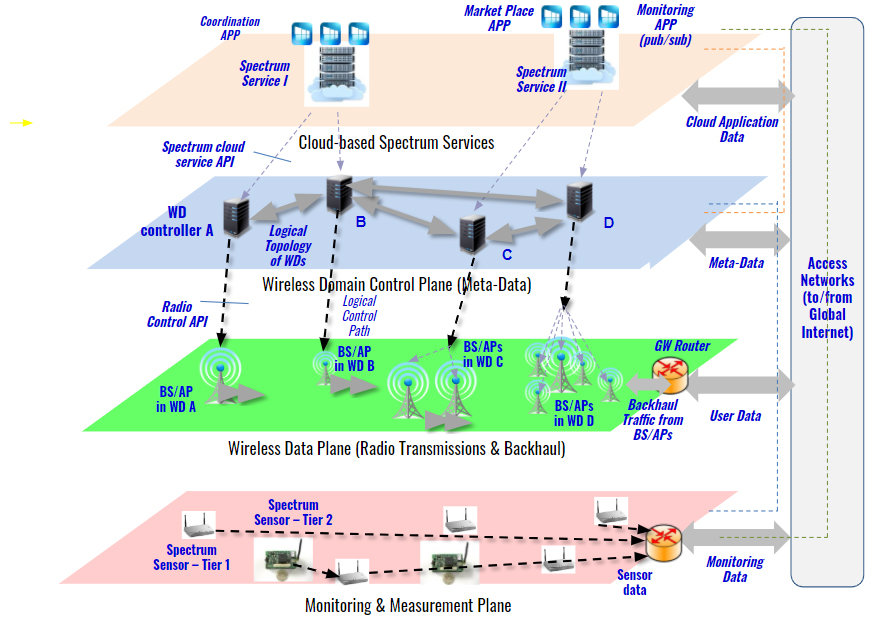Information Architecture
This architectural research thrust considers the design of a secure “information architecture” for cross-layer and data-driven dynamic spectrum management. Protocol assisted spectrum management techniques being considered by members of the team involve the use of a spectrum control plane protocol and/or cloud-based spectrum controllers that enable autonomous wireless-optical network domains to exchange radio usage information (spectrum metadata) necessary for dynamic local cooperation in the region. Hybrid architectures with a mix of centralized and decentralized control are also under consideration. Such information architectures for spectrum leverage the emerging concept of “spectrum consumption models” (SCMs) to quantify and describe spectrum use by participating network entities, providing a rigorous description of spectrum resources for use in data-driven cooperative algorithms and service level agreements. Further, a cross-layer, AI-assisted distributed sensing and compliance monitoring and control capability is proposed as a supporting layer of the information architecture for ensuring transparency and accountability of participants in the spectrum marketplace. Such AI based decision controls can rapidly enforce and adapt spectrum use through coordination over a converged wireless and fiber network. Another important study topic related to the spectrum information architecture is that of security and trust arising in distributed spectrum coordination scenarios under consideration, considering various types of attacks across the layers including physical layer, control plane, data plane, and cloud services.

